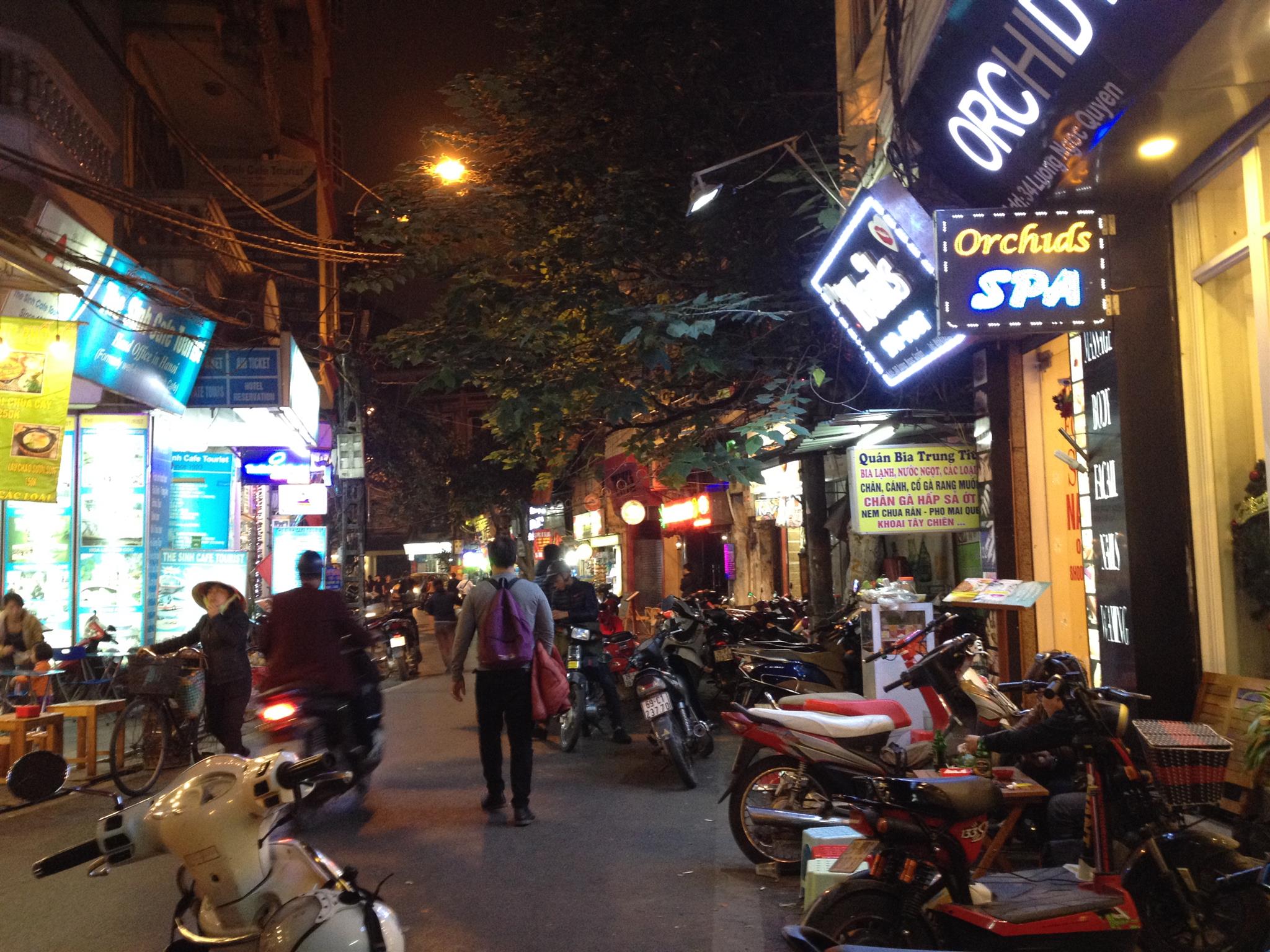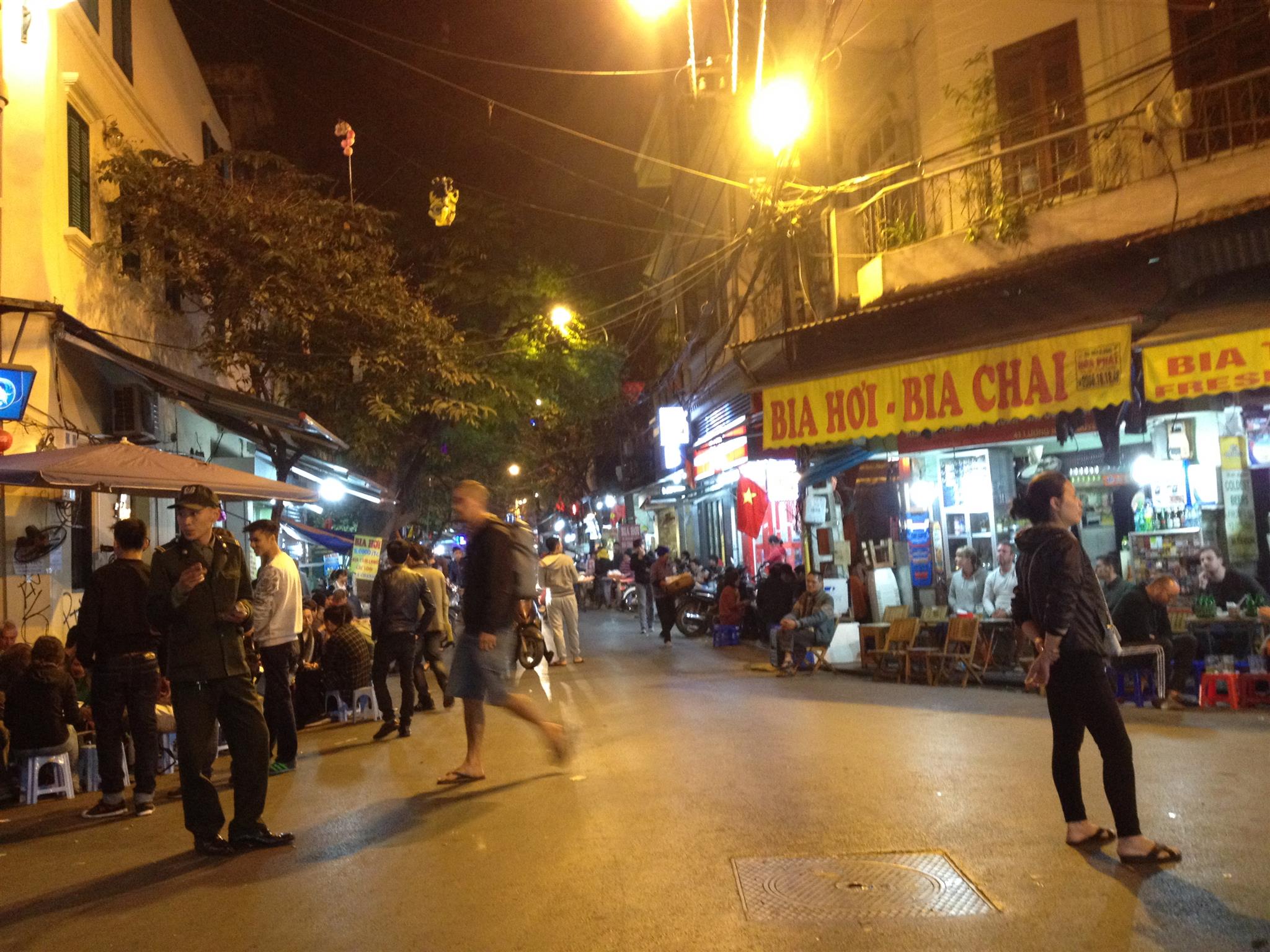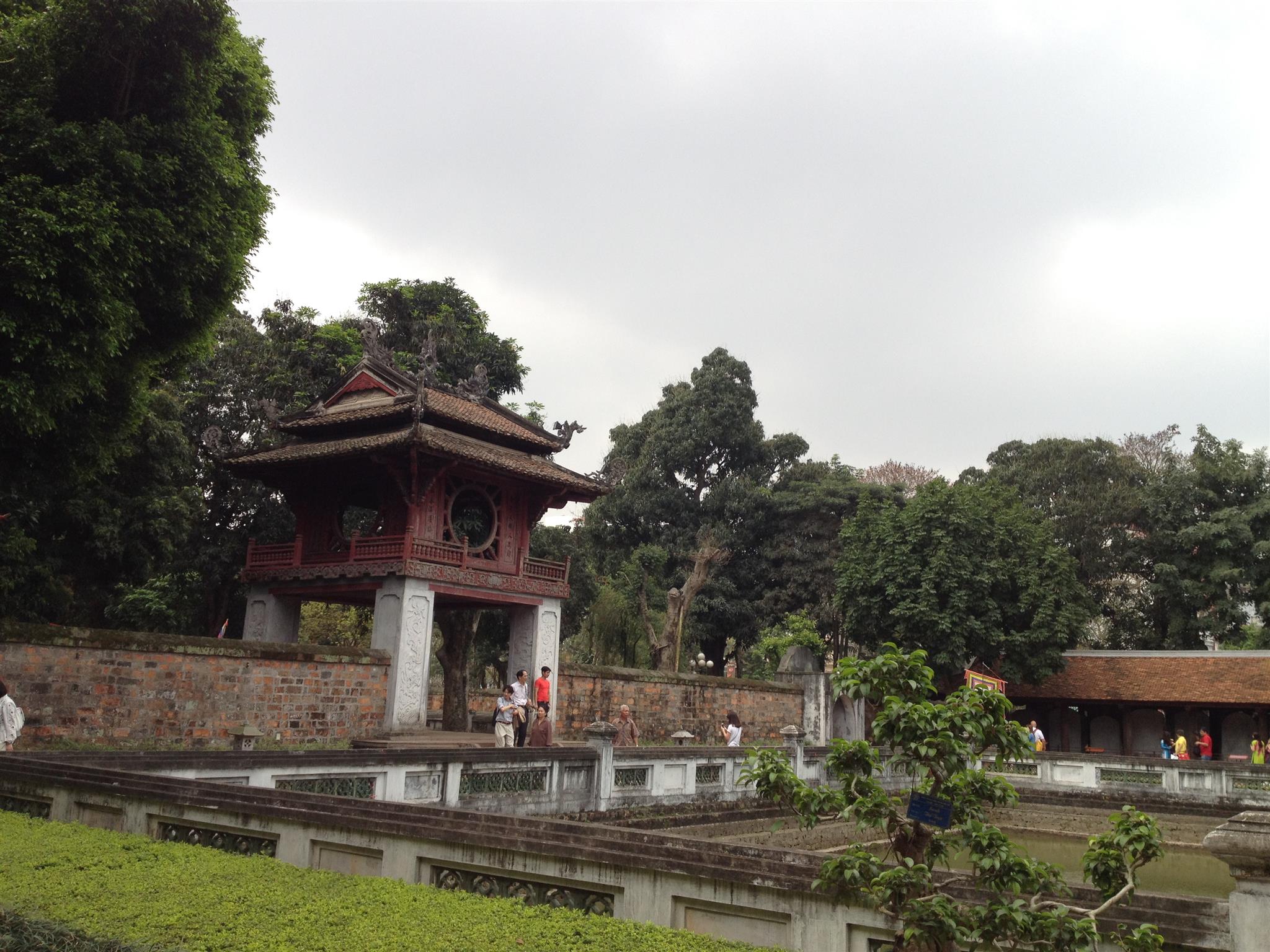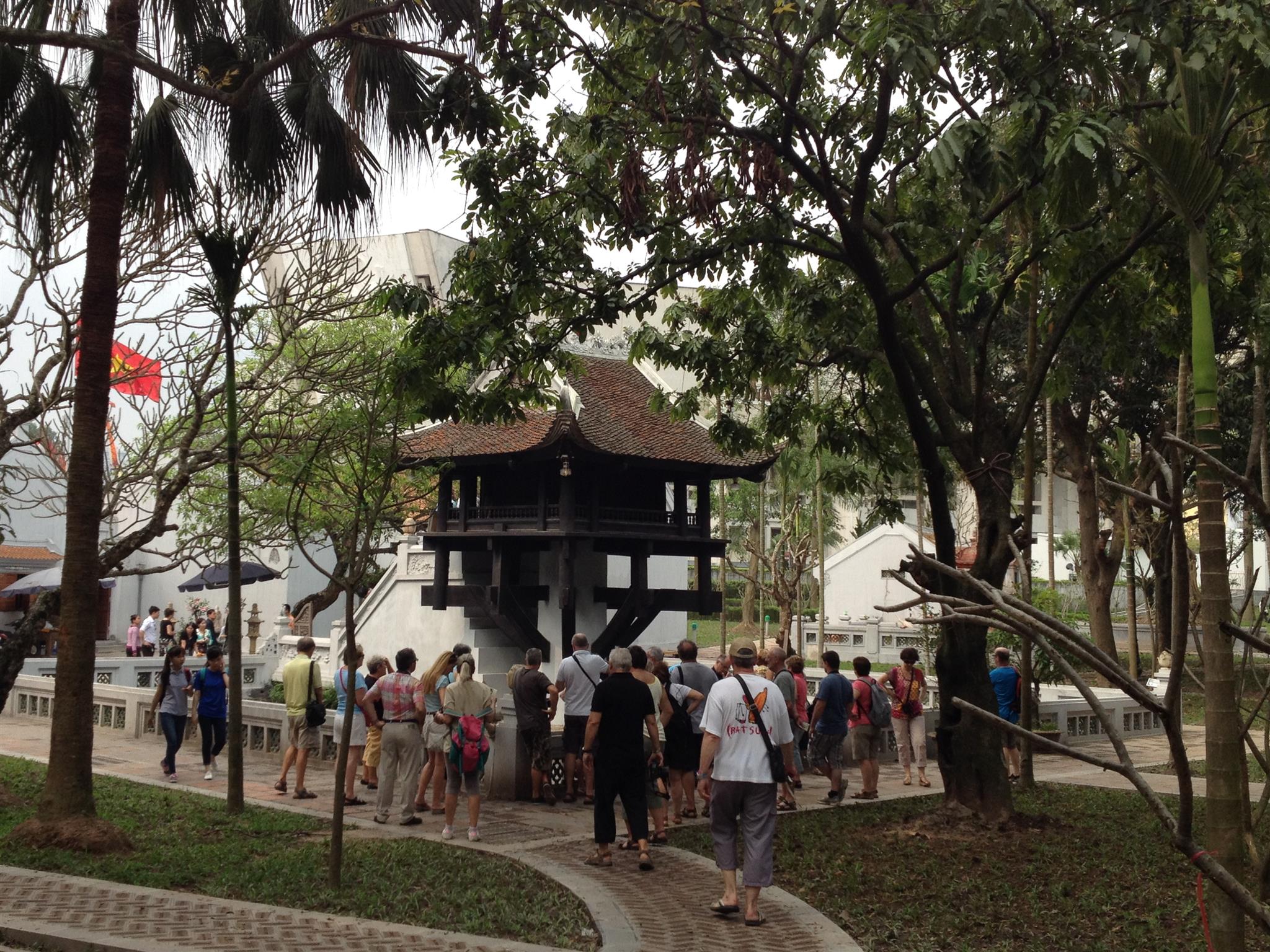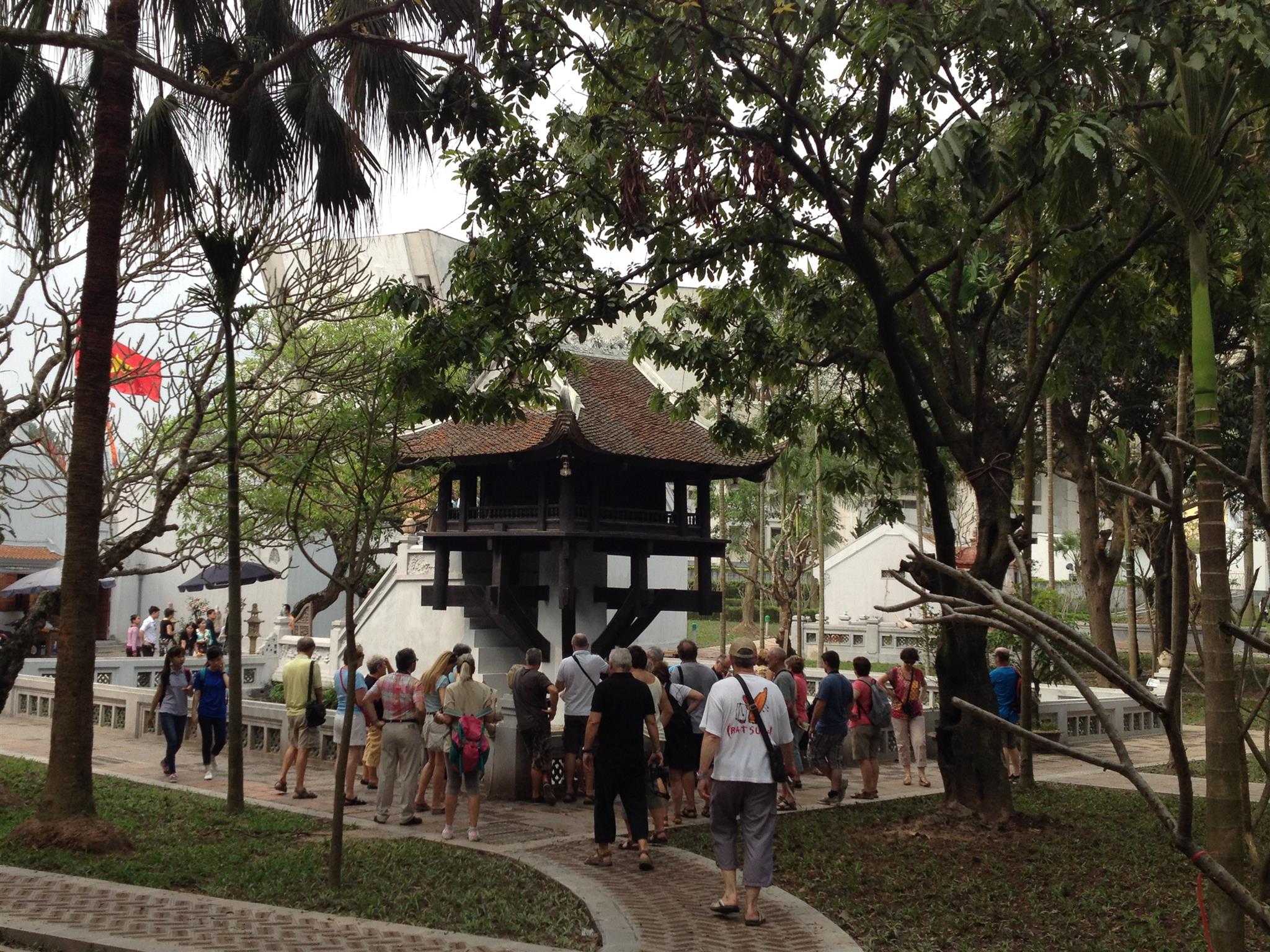Hanoi is filled with cultural and historical charms – a place where you can find a perfect harmony of the old and the new, the traditional and the modern, the East and the West, all the conflicts co-existing and completing each other.
Sword Lake and Old Quarter
Sword Lake and the Hanoi Old Quarter together create a hustling tourist centre which is like nowhere else. The whole area is the oldest continuously developing area of Hanoi with a history that spans 2000 years, representing the eternal soul of “the city of the soaring dragon”.
Started from the 11th century, King Ly Thai To moved the capital from Hoa Lu to Hanoi, the land began to attract many skilled craftsmen from all the surrounding areas. They came to Thang Long (Hanoi’s old name) and organized themselves into several craft cooperatives and guilds. Each craft occupied a street and the craftsmen on that street often came from the same village. They opened stores to sell their handcrafted products. Over the years, the streets of Old Quarter developed a homogeneous look.
Back then the storekeepers were taxed according to the width of their storefront, so the living space and the storage were located at the rear of the buildings. That makes the houses in Old Quarter long and narrow with name “tube house” which became a familiar image in Old Quarter, symbolic even. A typical measurement for such houses is 3 meters wide by 60 meters long.
We often refer to Old Quarter with the name “36 old streets” there are more than 36 which, according to researchers, is just the number of guild location, more like workshop areas, not streets. The number of streets must be more than 70.
One thing to distinguish the Old Quarter of Hanoi from other Old Quarters is the name of the streets start with the word “Hang” which means merchandise or shop, followed by the noun of the product the whole street sells. For example, Hang Gai sells all kinds of fabrics and clothing but is famous for Van Phuc silk which is displayed throughout numerous stores on both sides of the streets. Hang Gai has become a site you can’t skip if you want to buy some fine silk in Hanoi.
Hang Ma is specialized in votive, paper crafts and home decorations. During holidays and festivals like Middle Autumn and Lunar New Year, the street turns into a burst of colours, red, silver and gold coming from the envelops, couplets, lanterns, paper caps, paper décor….
Being a little bit different from the two streets mentioned, between the name Ta Hien and what the street is famous for, there is hardly a connection. The original name of the street was Rue Géraud during the French colonialism period. Nowadays, Ta Hien is known as a renowned nightlife spot of the Old Quarter, attracting locals and foreigners alike, coming here to have a taste of fresh beer and enjoy Vietnamese delicacies. The prices for everything are generally cheap.
And many more interesting streets in the Old Quarter as Hang Bac selling silver, Hang Duong selling jams and candies and Dong Xuan market with all types of food and products…. Don’t miss out the night market also taking place at the heart of Old Quarter from every Friday to Sunday, 6:00 to mid-night. Weekends are also the time for the quarter to turn into a walking area, full of activities and tourism services.
Van Mieu Temple of Confucianism
If you book tour to Hanoi, every company will take you to visit Van Mieu or the Temple of Confucianism or nobly the “the first university of Vietnam” or arguably, the symbol of the city. Just 10 minutes away from the Hoan Kiem Lake, the temple complex covers an area of over 54000 meters square, surrounded by a brick wall.
Temple of Confucianism was established in 1070 A.D by Ly dynasty with a dedication to Confucius and Chu Cong. Confucius taught philosophy which benefited greatly patriarchy governments. King Ly Anh Tong by adopting this conception, encouraging the unconditional love and loyalty of the intellectuals to the highest power. The first and foremost function of Van Mieu is to educate the princes the principles of Confucianism. An honourable man is someone who always holds high-regards of 3 kinds of persons: his king, his teacher(s) and his father who are also all men. From 1253, King Tran Thai Tong re-opened Van Mieu for all civilians who had academic talent. With Van Mieu, Confucianism started its influence into Vietnam society and we can say that Van Mieu took a significant part in promoting Confucianism philosophy back in the time.
In 1484, steles of all valedictorians of national examinations and doctors started from 1442 to be erected on both sides of Thien Quang Tinh (Well of Heavenly Clarity) in the third courtyard of Van Mieu. As of today, 82 steles still remain, preserving the name and origins of 1307 doctors, corresponding to 82 examination courses from 1442 to 1779. Each stele stands on a giant stone-made tortoise.
Each courtyard inside Van Mieu was built with its own significance and meaning. The first courtyard starts from Great Portico to the Great Middle Gate (Dai Trung Gate); the second lays the unique architectural work Khue Van Cac which has become the symbol of Thang Long; the third is Thien Quang lake. Through the Gate of Great Synthesis is the fourth courtyard where Confucius and his 72 honoured students are worshipped; among them is Nguyen Trai one of the most influential scholars in Vietnam history. The furthest part of Van Mieu is Thai Hoc House which holds a small exhibition of mandarin costumes as well as the explanation of national examination’s process in the past.
To most of the Vietnamese people, Van Mieu represents the intellectual values of the country and they often visit the place before university passing examination or in Lunar New Year to wish for a successful studious career. University graduates also visit the temple for their graduation photo.
Tourists can visit the temple every day except for Monday and national holidays from 8:00 AM to 5:00 PM. Admission for adults is 30,000VND and children 15,000VND.
One Pillar Pagoda
One Pillar Pagoda is a small-scaled and humble cultural construction yet no less impressive with its distinctive style of architecture. The pagoda stands on a single pillar in the middle of a lotus pond, making a resemblance a lotus itself. As a country that was influenced deeply by Buddhism, a lotus represents the symbol of fortune and purification – a flower which blooms above the murk to achieve enlightenment.
One Pillar Pagoda was built for the first time by King Ly Thai Tong from October of the year 1049. The king at that time hadn’t had a successor to his throne, came to several pagodas praying for a son. One night he dreamt of Guan Yin was sitting on a blooming lotus on a square pond, who in dream invited him to a specific pagoda in Nhat Tru village and gave him a fairy newborn. Magically, after a while, the queen was impregnated with his child and gave birth to a boy. The king knew the gods had helped him then decided to visit Nhat Tru village and built One Pillar Pagoda which was named first as Dien Huu (meaning Long Happiness).
However, the story above is not the reason why One Pillar Pagoda holds a great significance to Hanoians. Throughout Vietnam history, many wars had taken place, the country in general and this pagoda, in particular, was often damaged. One pillar pagoda was restored many times by many emperors before being completely ruined in the 20th century. The French used mine to destroy it in 1954 before withdrawing from Hanoi. After Ho Chi Minh’s government taking over the capital, One Pillar Pagoda was rebuilt again, returning to its original state.
The single pillar used to be made of wood but now replaced by 2 blocks of stone. The pagoda above is still made solely of wood with a statue of Guan Yin inside. Linh Chieu lake was added later in 1105 by King Ly Nhan Tong. As you see it today, One Pillar pagoda is 4 meters high, with each curved roof side is 3m wide and a single pillar 1.25m in diameter. The pagoda’s roof is the most important part and valued in the architecture aspect. All four sides are curved upward, decorated with traditional patterns of two dragons facing the moon. This pattern, to Vietnamese people, symbolizes the holy power bringing the wish for wisdom and vitality of human beings. The lotus image that the pagoda is designed sends the message of equality for all people.
You can visit One Pillar Pagoda within Ho Chi Minh Complex (behind the mausoleum and in front of the Ho Chi Minh museum) daily with free entrance.
